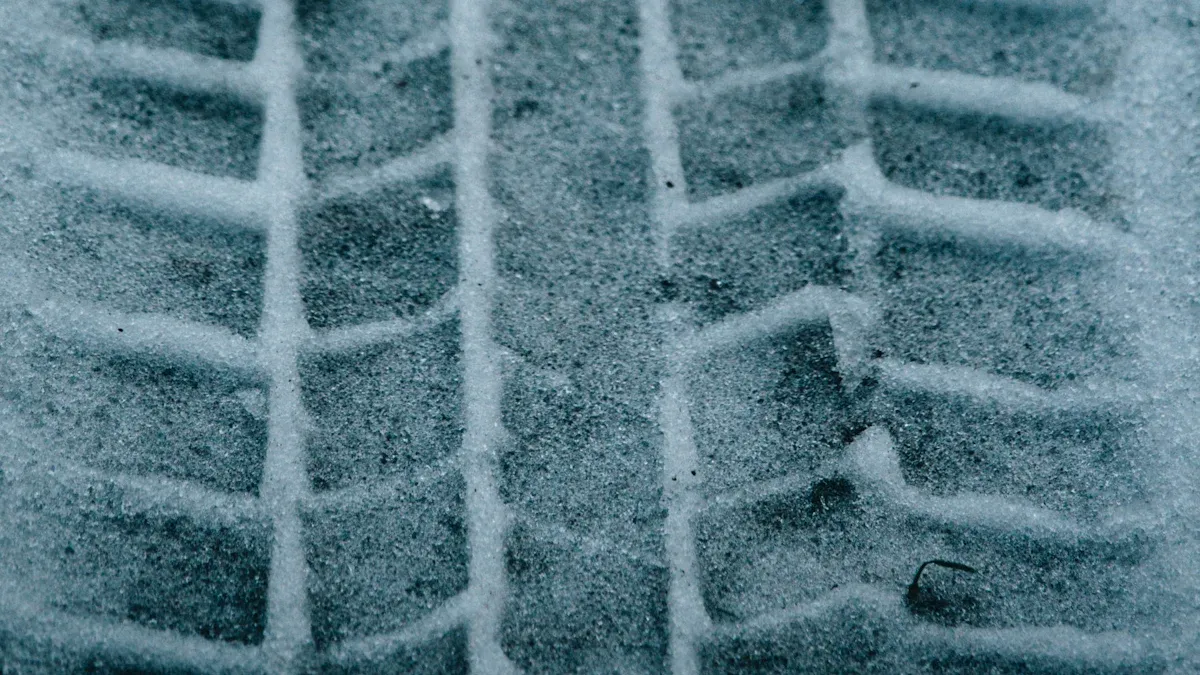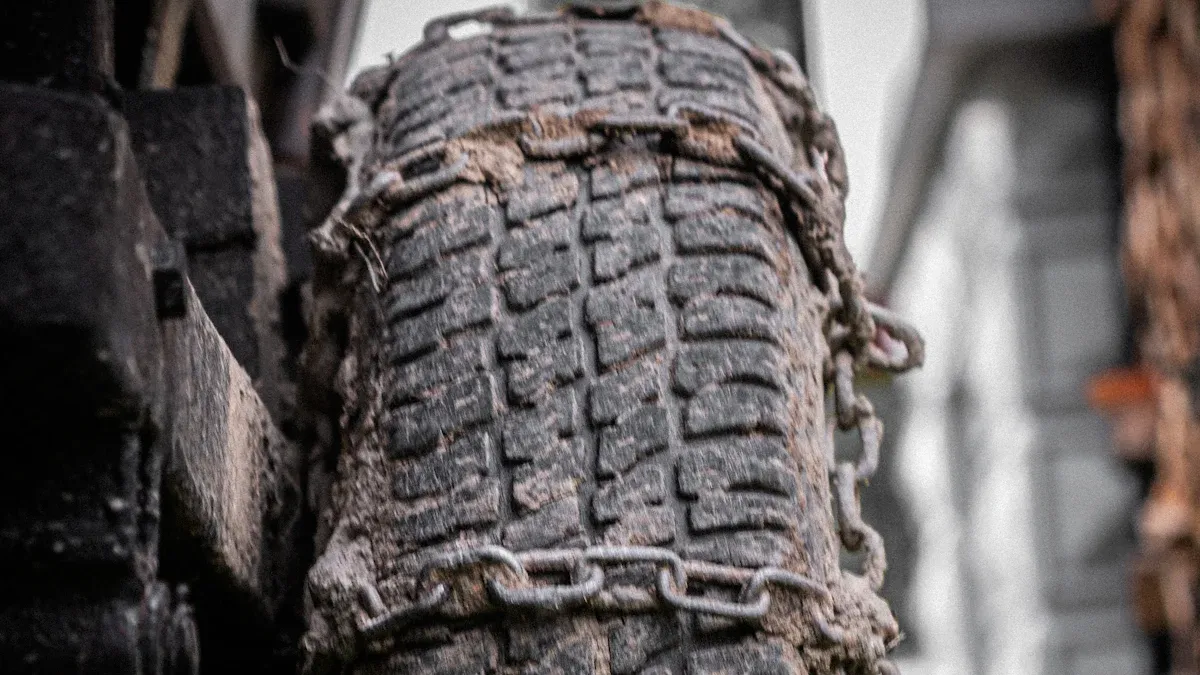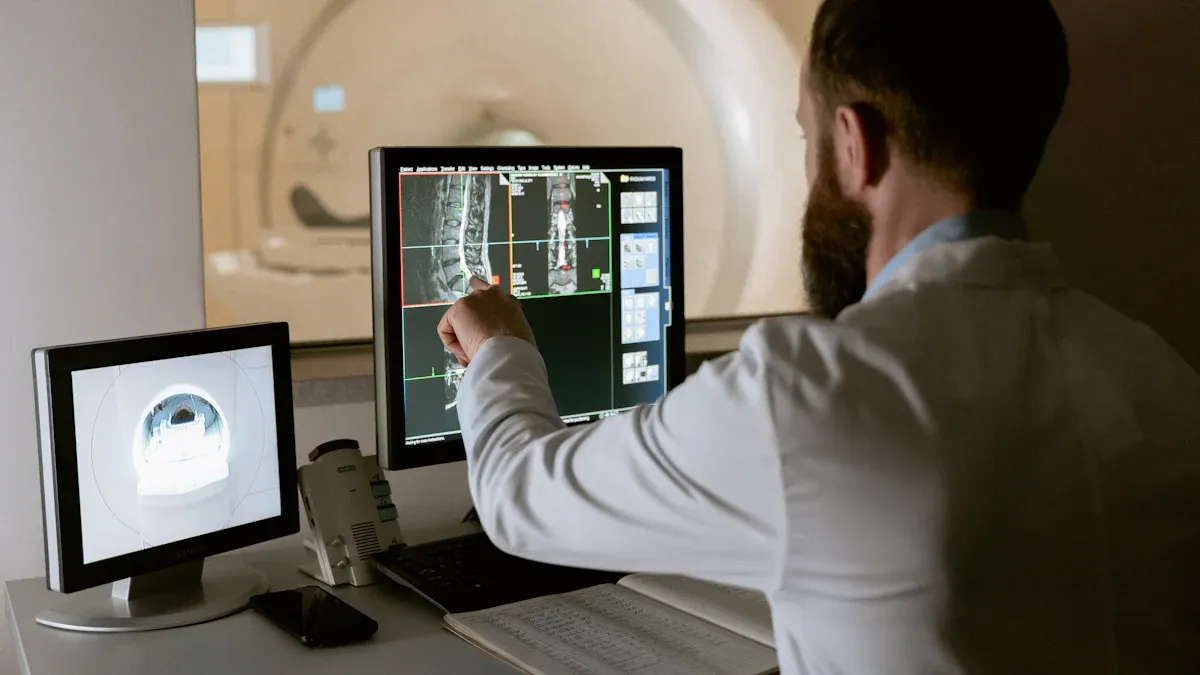
Accurate tire tread measurement is very important for fleet management. It affects safety, costs, and how well vehicles work. Fleet managers often have problems with the accuracy and reliability of their tools. For example, mistakes can cause big cost errors. A vehicle with 100,000 miles might have a 25% wrong estimate of tire life. This can lead to extra costs. This brings up the question: which tool is better for your fleet, the tire tread scanner or the ultrasonic depth gauge?
Tärkeimmät opit
Tire tread scanners give better measurements than ultrasonic gauges. This helps keep fleets safe and lowers accident risks.
Tire tread scanners save time because they can scan many tires at once. This boosts productivity in fleet management.
Knowing what affects measurement consistency helps keep tire tread checks reliable. This leads to better maintenance plans.
Buying tire tread scanners might cost more at first. However, they reduce long-term labor costs and help tires last longer.
New technologies, like smartphone imaging and automated systems, are changing how we measure tire tread. They make it faster and more accurate.
Precision Comparison

Measurement Techniques
When measuring tire tread depth, renkaanurien skannereista and ultrasonic gauges use different methods. Tire tread scanners use special imaging technology. They take clear pictures of the tire surface. These scanners look at the tread patterns and give exact depth measurements. Ultrasonic gauges, however, use sound waves. They measure how far the sensor is from the tire surface. This method figures out tread depth by timing how long it takes for the sound waves to bounce back.
Both methods have good points. Tire tread scanners show a complete view of the tire’s condition. They can show wear patterns and possible problems. Ultrasonic gauges give quick and easy measurements. This makes them good for fast checks.
Accuracy of Tire Tread Scanners
Accuracy is very important in measuring tire tread. Tire tread scanners usually give more precise results than ultrasonic gauges. Research shows that tarkkoja mittauksia can greatly improve fleet safety. For example, a small mistake in measuring tread depth can create unsafe driving conditions. This raises the chance of accidents.
To show how measurement accuracy affects safety, look at this table:
Evidence Type | Kuvaus |
|---|---|
Increased use of safety technology | Using AI-powered dash cams and electronic logging devices gives fleet managers real-time views of operations, improving safety. |
Better fleet compliance | Managing FMCSA ratings and SMS scores helps fleets avoid violations, leading to better safety results. |
Increased focus on the job | AI dash cams and driver apps help correct unsafe driving habits, creating a safety culture. |
By making sure tire tread measurements are accurate, you can manage your fleet’s safety better. The precision of tire tread scanners helps you make smart choices about tire care and replacement. This can lower the chances of accidents caused by worn tires.
Consistency and Reliability
Factors Affecting Consistency
When you measure tire tread depth, many things can change your results. Knowing these things helps you take care of your fleet’s tires better. Important factors include:
Tire properties: Differences in tire design and materials can change how you measure tread depth.
Driving conditions: Different places to drive, like cities or countryside, can cause uneven wear.
Road surface materials: The kind of road can affect how tires work and wear, changing measurement results.
Ambient environmental factors: Temperature and humidity can change tire properties, affecting how accurate your measurements are.
By knowing these factors, you can check how reliable your measurements are. This helps you keep a steady plan for tire maintenance.
Real-World Performance
In real life, the reliability of renkaanurien skannereista and ultrasonic gauges can be very different. Tire tread scanners usually give more steady results because of their advanced imaging technology. This technology takes clear pictures of the tire surface. It helps you see the wear patterns better. On the other hand, ultrasonic gauges might not be as steady in tough situations, like when tires are wet or dirty. Sound waves can have trouble moving through these conditions.
How steady your tire tread measurements are affects fleet safety. Regular checks and good maintenance help you find tire problems early. This way, you can lower the chances of breakdowns and accidents. Having enough tread depth helps with grip. This makes skidding less likely and improves road safety. Fleet operators have seen big drops in tire-related problems after using standard inspection methods. Some groups reported accident rates dropping by over 20%.
By focusing on keeping your tire tread measurements steady, you can make your fleet safer and more reliable. This leads to better efficiency in operations.
Efficiency in Fleet Management

Speed of Measurement
Time is very important when managing a fleet. You need tools that give quick and accurate tire tread depth measurements. Renkaiden uratarkastimet are great for this. They can scan many tires at once and give results in seconds. This speed helps you do thorough checks without stopping your work.
On the other hand, ultrasonic gauges need a more hands-on method. You have to place the gauge on each tire one by one, which takes time. While ultrasonic gauges can still give accurate readings, they are not as fast as tire tread scanners.
To show the difference, look at this:
Tool | Mittausnopeus | Notes |
|---|---|---|
Tire Tread Scanner | Seconds per tire | Scans multiple tires at once |
Ultrasonic Gauge | Minutes per tire | Requires individual positioning |
By picking a tire tread scanner, you can save a lot of time on tire checks. This speed means your fleet can be more productive.
Cost Analysis
Cost is also very important in fleet management. You want to make sure your money spent on tools is worth it. Tire tread scanners might cost more at first than ultrasonic gauges. But think about the savings over time.
With tire tread scanners, you lower labor costs. Their speed lets your team check more vehicles faster. This helps reduce downtime and increases productivity. Also, tarkkoja mittauksia help with better tire care. You can avoid changing tires too soon and make them last longer, saving money later.
In contrast, while ultrasonic gauges cost less at first, their slower speed can lead to higher labor costs later. You might need more workers to do inspections, which can add up fast.
Data Management and Analysis
Data Collection Methods
Collecting data well is very important for fleet management. It helps you keep track of tire health and make smart choices. Renkaiden uratarkastimet and ultrasonic depth gauges have different ways to collect data:
Contact-Based Scanning: This method uses sensors that touch the tire to measure tread depth.
Non-Contact Scanning: Tools like lasers or ultrasound measure without touching the tire, giving quick results.
Computer Vision: Cameras and image processing check tire tread depth, giving detailed information about tire conditions.
These methods help you get accurate data on tire thickness and overall tire health.
Integration with Fleet Systems
Tire tread scanner technology makes data management better by working well with current fleet management software. This connection gives you easy access to tire health data along with other vehicle performance information. Here are some important features of this connection:
Ominaisuus | Kuvaus |
|---|---|
Direct Integration | Can be added to current fleet management systems or mobile apps. |
Kustannustehokkuus | Uses existing devices, reducing extra spending. |
Käyttäjäystävällinen | Simple to use, needing less training on new devices. |
Laitteen yhteensopivuus | Works with Android and iOS smartphones. |
Framework Support | Supports common integration frameworks like Xamarin and React Native. |
Real-time data analysis from tire tread scanners helps you in many ways:
Safety improves as tires meet safety standards.
Operational efficiency gets better by making inspection processes smoother.
Legal risks go down by following safety rules.
Cost savings happen by reducing accidents and improving fuel efficiency.
By using tire tread scanner technology, you can make your fleet’s operations safer and more efficient through good data management.
Choosing the Right Tool
Specific Fleet Needs
When picking between a renkaanurien skanneri and an ultrasonic gauge, think about what your fleet needs. Each tool has special benefits that can help you reach your goals. Here are some things to think about:
Fleet Size: Big fleets might like the speed of tire tread scanners. They can measure many tires at once. Smaller fleets may find ultrasonic gauges good enough for them.
Measurement Frequency: If you need to measure often, tire tread scanners are efficient. For checks now and then, ultrasonic gauges can save you money.
Budget Constraints: Look at how much money you have for buying tools and keeping them up. Tire tread scanners might cost more at first but can save cash later by cutting labor costs and helping with tire care.
Emerging Technologies
The future of measuring tire tread looks good. New technologies are making it more accurate and efficient. Here are some cool new ideas:
Teknologia | Kuvaus |
|---|---|
Automated Tire Tread Measurement | Continental’s ContiConnect system gives daily updates on tire wear. This helps plan tire services better and makes fleets safer and more efficient. |
Smartphone Imaging | Goodyear teamed up with Taazaa to create a smartphone solution. It uses AI to check tread depth and gives real-time feedback without needing special tools. |
Mobiili renkaanurien skanneri | Anyline’s new idea lets you measure tire tread accurately with mobile devices. This helps with rules and cuts costs. |
These new tools use artificial intelligence and mobile tech to make measurements better. AI helps improve accuracy by processing data in smart ways. It can find small details in data that older methods might miss. These systems learn over time to fit specific vehicles and drivers, giving you the best information.
As you think about your choices, watch these trends. They can change how you manage your fleet and help you make smart choices about tire care.
In conclusion, tire tread scanners are better than ultrasonic depth gauges. They are more accurate, faster, and better at managing data. Important results show that non-contact methods, like 3D laser scanning, work better than older methods. As you think about what your fleet needs, keep in mind that new technology and a focus on being eco-friendly will change tire measurement tools in the future. Pick the tool that fits your goals and improves safety and efficiency.
UKK
What is the main advantage of using a tire tread scanner over an ultrasonic depth gauge?
Renkaiden uratarkastimet give more accurate measurements and faster results. They can scan many tires at once, which helps fleet management work better.
Kuinka usein minun tulisi mitata renkaanurien syvyyttä?
You should check tire tread depth regularly, ideally every month or before long trips. Checking often helps keep safety high and tire performance good.
Can I use a tire tread scanner in different weather conditions?
Yes, tire tread scanners work well in many weather conditions. Their imaging technology gives reliable measurements, even when it’s wet or dirty.
Are tire tread scanners expensive to maintain?
While tire tread scanners might cost more at first, their efficiency lowers labor costs and helps tires last longer. This can save you money overall.
How do I choose the right tool for my fleet?
Think about your fleet size, budget, and how often you need measurements. Tire tread scanners are good for larger fleets that need frequent checks. Ultrasonic gauges may be better for smaller fleets with less frequent needs.
Katso myös
Älykkäiden renkaanurien syvyysmittareiden ja niiden toiminnan ymmärtäminen
Renkaan urasyvyyden tarkkuusmittarin käyttö tarkkoihin mittauksiin






